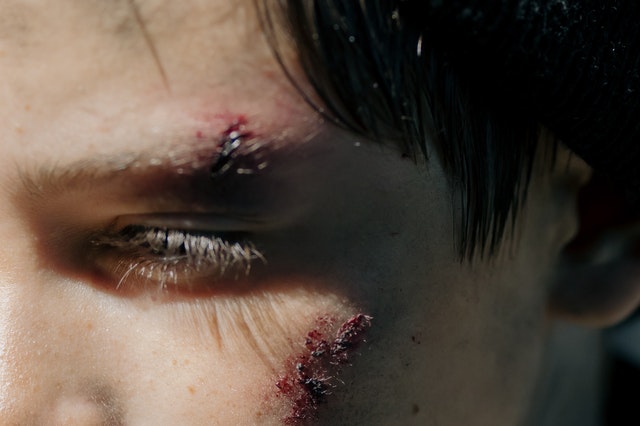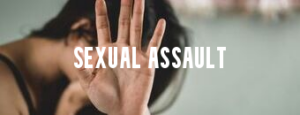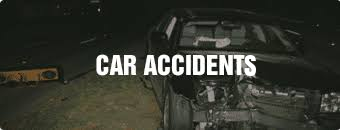- Our Firm
- Personal Injury
-
-
-
Personal Injury Lawyers
-
-
-
-
-
-
Injured in an accident? At Diamond & Diamond, our team of lawyers rely on their reputation in the field and extensive experience in personal injury to provide clients with a dedicated support system over the duration of their case.
-
-
-
-
-
HAVE YOU RECENTLY BEEN INJURED IN AN ACCIDENT?
-
-
-
- Corporate
- Class Action

Determining Negligence When Someone Injures You
#AskCoreySax
Doing something that causes harm to another person is what most people might consider when asked to describe negligence. Sometimes, it can be the failure to do something that could lead a court to award compensation to an injured victim. In either case, it is the negligent conduct of people that makes them liable for the harm they cause.
As a general rule, determining negligence depends on the party suffering harm to prove the following:
- Existence of a duty of care
- Breach of the duty
- Harm caused by the breach
Unless a victim can prove all three elements, negligence might not be established in a particular case.
Negligence and the duty of care
When you get into your car and start driving, you owe a duty of care to other people using the road. You might not consciously be thinking of owing anyone a duty, but the law and the courts in Ontario certainly do. Drivers, property owners, physicians and others owe a duty to act in a way that does not expose other people to harm.
As the driver of a car, your duty is to maintain control over your vehicle at all times and to keep a proper lookout for other drivers, pedestrians and anyone else using the road. If you fail to do so and cause injury to another person, you could be liable for the damages they suffer. For instance, if you were busy sending a text message to a friend and did not look up from your smartphone, a court might determine you breached your duty of care to the victim.
A breach of duty does not have to be caused by someone doing something. It could be the failure to do something that creates the risk of harm. A property owner who fails to clear ice and snow from the sidewalks is an example.
Establishing the standard of care
The duty owed to others is to avoid subjecting them to an unreasonable risk of harm. Courts use what has been referred to as a “reasonable person” standard. The standard asks: What would the average, reasonably prudent person have done under similar circumstances?
When dealing with doctors, lawyers and other professionals, courts still use the reasonable person standard. The only difference is it would be a reasonable person practicing the same profession as the individual against whom you are seeking to establish negligence. If, for example, you are suing a surgeon for medical malpractice, the standard of care would be that expected of a surgeon practicing for the same number of years in the same specialty as the surgeon being sued.
There must be harm caused to a victim
If you are accusing someone of negligence, there has to be a link between the conduct the person engaged in and the harm done to you. Canadian courts use a simple test to determine whether the accident and injuries would have happened if not for the conduct of the other party. This so-called “but for” test is the standard in determining negligence because it establishes the negligent conduct the cause of the harm suffered by a victim.
It is the causation courts look for before awarding compensation. If a person loads blanks into a gun, points it at another person who does not know it’s loaded with blanks and pulls the trigger, a court could find the shooter liable for causing the victim to suffer a heart attack.
A personal injury lawyer can help
Whether you are injured in a slip and fall accident at a Toronto store or in a car accident on an Ontario highway, the personal injury lawyers at Diamond and Diamond are ready to help. They are experienced lawyers with an unsurpassed knowledge of the law and the ability to identify and present the evidence necessary to prove negligence. Call our 24/7 injury hotline at 1-800-567-HURT or visit our website to speak to someone now about your claim. Consultations are free, and we have offices located throughout Ontario.
Need a Lawyer?
We are here 24/7 to address your case. You can speak with a lawyer to request a consultation.
1-800-567-HURTGet started with a free consultation
OUR TEAM
- Ishmeet Sandhu
- Nolan Bachmann
- Annamarie Demaj
- Jeffrey Hum
- Tofunmi Adeyeye
- Alessia De Gasperis
- Amandeep Chawla
- Jeremy Tsoi
- Kimiya Razin
- Shir Zisckind
- Gray Sinden
- Shelly Bard
- Christian Brown
- Daly Canie
- Tanveer Sohal
- Prianka Virdi
- Noah Brownstone
- Justin Kaminker
- Harinder S. Bhatti
- Craig Yargeau
- Kiran Birk
- Amit Singh
- Andrei Teju
- Maria Zahid
- Matthew Douglas
- Jacob Elyk
- Harry Gill
- Kristina Olivo
- Egi Bano
- Cam Woolley
- Charles Thompson
- Alexandra McCallum
- John Sime
- Allan Cocunato
- Patrick Poupore
- Erika Henderson
- Marina Korshunova
- Brandon Handelman
- Regeena Alapat
- Ryna Kim
- Natalia Poliakova
- Isaac Zisckind
- Manpreet Bhogal
- Mathura Santhirasegaram
- Nikolai Singh
- Sandra Zisckind
- Jeremy Diamond
- Michael Blois
- Darryl Singer
- Nadia Condotta
- Tinashe Madzingo
- Megan Armstrong
- Veronica D’Angelo
- Corey J. Sax
- Scott Tottle
- Steven Wilder
- TJ Gogna
- Jillian Carrington
- Joshua Himel
- Simon Diamond
- Cory Rubin
- Simon Mariani
- Brandon Greenwood
- Basil Bansal
- Nastassia Ivanova
- Tania Fleming
- George Laloshi
- Patrycja Majchrowicz
- Diana Iakossavas
- Dior Africa
- Alex Ragozzino
- Liana Saccucci
- Richard J. Chang
Head Offices
Main Offices
Barrie
Main Office
168 Bayfield Street
Calgary
Main Office
1331 Macleod Trail SE, Suite 645
Edmonton
Head Office
4246 97 Street NW, Unit 103
Halifax
Consultation Office
1701 Hollis St
London
Main Office
256 Pall Mall St, Suite 102
Oshawa
Consultation Office
50 Richmond Street E, Unit # 108 B
Ottawa
Main Office
955 Green Valley Crescent, Unit 315
Sudbury
Main Office
31 Larch Street, Unit 300
Timmins
Main Office
120 Cedar Street South, Unit 002A
Toronto
Head Office
255 Consumers Road, 5th Floor
Vancouver
Head Office
1727 West Broadway, Suite 400
Windsor
Main Office
13158 Tecumseh Rd. E. Unit 3B
Additional Areas Served
Ontario
- Ajax
- Alberta
- Aurora
- Barrie
- Belleville
- Bowmanville
- Brampton
- Brantford
- Brockville
- Bracebridge
- Bradford
- Burlington
- Burnaby
- Calgary
- Chatham
- Cobourg
- Collingwood
- Cornwall
- Durham
- Edmonton
- Elliot Lake
- Etobicoke
- Georgetown
- Guelph
- Hamilton
- Huntsville
- Kanata
- Kelowna
- Kingston
- Kitchener
- Leamington
- London
- Markham
- Milton
- Mississauga
- Muskoka
- Niagara Falls
- Newcastle
- Newmarket
- North Bay
- North York
- Oakville
- Orangeville
- Orillia
- Oshawa
- Ottawa
- Owen Sound
- Parry Sound
- Perth
- Peterborough
- Pickering
- Prince Edward County
- Richmond
- Richmond Hill
- Sault Ste Marie
- Sarnia
- Scarborough
- St. Catharines
- St. Thomas
- Stouffville
- Sudbury
- Surrey
- Thunder Bay
- Timmins
- Toronto
- Uxbridge
- Vancouver
- Wallaceburg
- Waterloo
- Welland
- Whitby
- Windsor
- Woodstock













